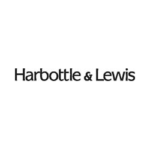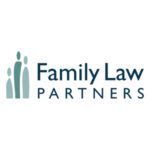Continue reading "Cohabitation: No further forward"
Cohabitation: No further forward

By the underlying claim the appellant (the claimant at first instance) had sought a declaration as to the extent of his beneficial interest in a residential property (the property) which he and the respondent (the defendant at first instance) had purchased in joint names, having been at that time a cohabiting couple. Following a dispute, the claimant had moved out of the property only two years or so after it had initially been purchased. Prior to moving out, the claimant had contributed to the mortgage repayments in equal shares with the defendant, but had ceased to make any further con...
In 1986, a farm known as Cefn Coed was purchased by Mr and Mrs Williams and one of their sons, the appellant. There was no express declaration of trust. Mr and Mrs Williams and the appellant were in a partnership and the partnership paid the mortgage on Cefn Coed. The wills of Mr and Mrs Williams dealt with Cefn Coed as though it was held on a tenancy in common in equal shares and Mr Williams was found to have served a notice of severance of any joint tenancy before his death. Mrs Williams and then Mr Williams passed away. It was determined that Cefn Coed was not a partnership asset but,...

Continue reading "Cohabitation: No further forward"

Continue reading "TOLATA 1996: No harm done"
The parties had started a relationship in 1990. Mr Hudson had moved into Ms Hathway’s home and become joint owner. They did not marry and had two sons. The home was sold and another bought in joint names. In 2007 they purchased Picnic House with a mortgage. It was again purchased in joint names with no declaration of trusts. They separated in 2009, with Ms Hathway staying at Picnic House. The mortgage was converted to an interest-only mortgage. It continued to be paid from a joint account into which both of their salaries had been paid.
In July and August 2013 there was an exchang...

Continue reading "Trusts: Doing away with the need for detrimental reliance"
The claimant was the son of the defendant. The parties were the registered owners of a residential property. The property was purchased through a mortgage which was obtained using the claimant’s earnings. The defendant paid the balance of the purchase price meaning that the claimant made no contribution. The TR1 was signed by the transferors but not the claimant and defendant as transferees, but nevertheless contained a manuscript cross in Box 11 recording that ‘the transferees are to hold the property on trust for themselves as tenants in common in equal shares’. The claimant claimed a ...
Between 2011 and 2013, the claimant obtained multiple charging orders in respect of five properties registered in the joint names of Mr and Mrs Dua. The Duas occupied four of the properties as a single residence, known together as ‘Fulmer House’. The other was a separate property known as 49 Sudbury Avenue.
The Duas had purchased 49 Sudbury Avenue in 1987 and occupied it as their family home until 2004. The purchase had been funded by a mortgage and the Duas’ evidence was that Mr Dua alone had made the mortgage payments. In 1992/93 and 1995, there were two major extensions to 49 S...
A was survived by C, his sister; H, with whom he had had a relationship; E and F, who were the daughters of A and H; B, with whom A had also had a relationship; and G, the son of A and B. C was one of the executors of A’s will. Each of A and C owned 50% of the shares in X Ltd (the company) and on A’s death C remained a director and was in control of the company. During A’s lifetime, a property (Property 1) was acquired in his name and remained so at his death.
There were three claims following A’s death: (1) H claimed to be the beneficial owner of Property 1 (the property claim); ...